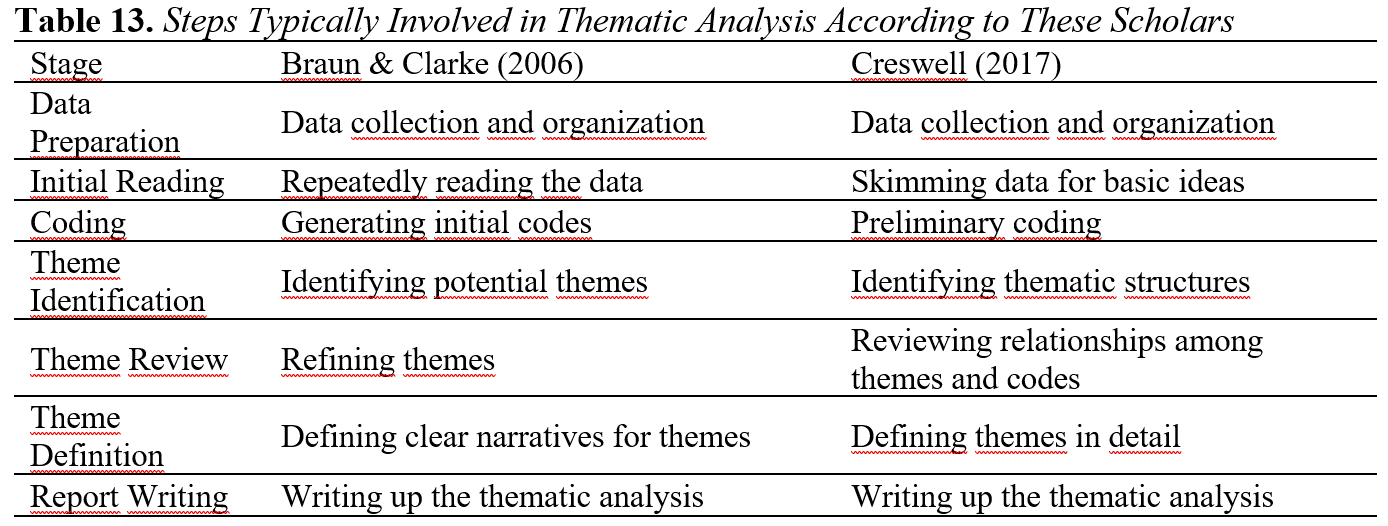Information

Thematic Analysis is a form of qualitative data analysis that aims to generate meaning by searching for different themes or patterns within a data set (Braun & Clarke, 2006). It is versatile, suitable for different disciplines and different research questions. It is frequently used in psychology, health research, social sciences, and humanities. The aim is to organize and understand complex data sets, to interpret or provide an in-depth explanation of a phenomenon. Its importance lies in revealing the researcher's nuanced understanding of the data and often provides deep insights into participants' experiences or understandings. The Table 13 aims to offer a comparative look at the steps typically involved in Thematic Analysis according to these scholars.

Table 13 provides a comparative overview of the steps typically involved in Thematic Analysis. There are certain similarities and differences between the steps proposed by Braun and Clarke (2006) and Creswell (2017). In the data preparation phase, both approaches focus on the data collection and organization process. In the initial reading phase, the Braun and Clarke approach recommends reading the data repeatedly, while the Creswell approach focuses on identifying key ideas more quickly. In the coding process, both approaches involve creating initial codes, but the way this process is implemented may differ between approaches. In the theme identification and review phases, both approaches involve identifying and developing themes, but the details and focus of the processes may vary. Finally, at the report writing stage, both approaches involve expressing the thematic analysis in writing.